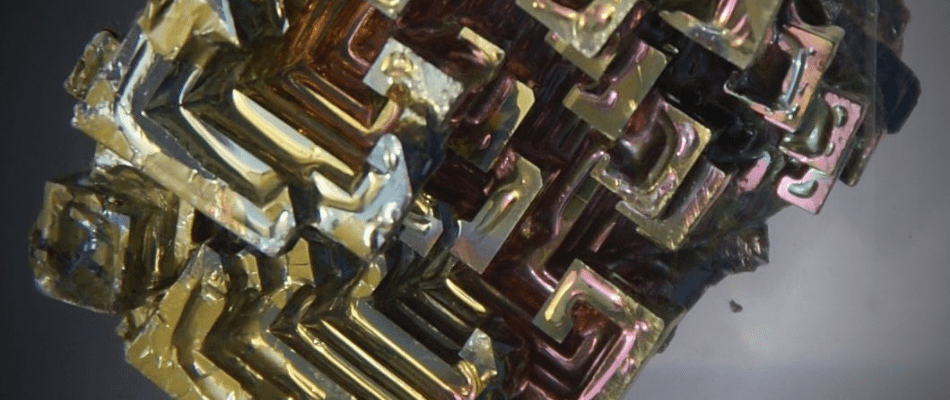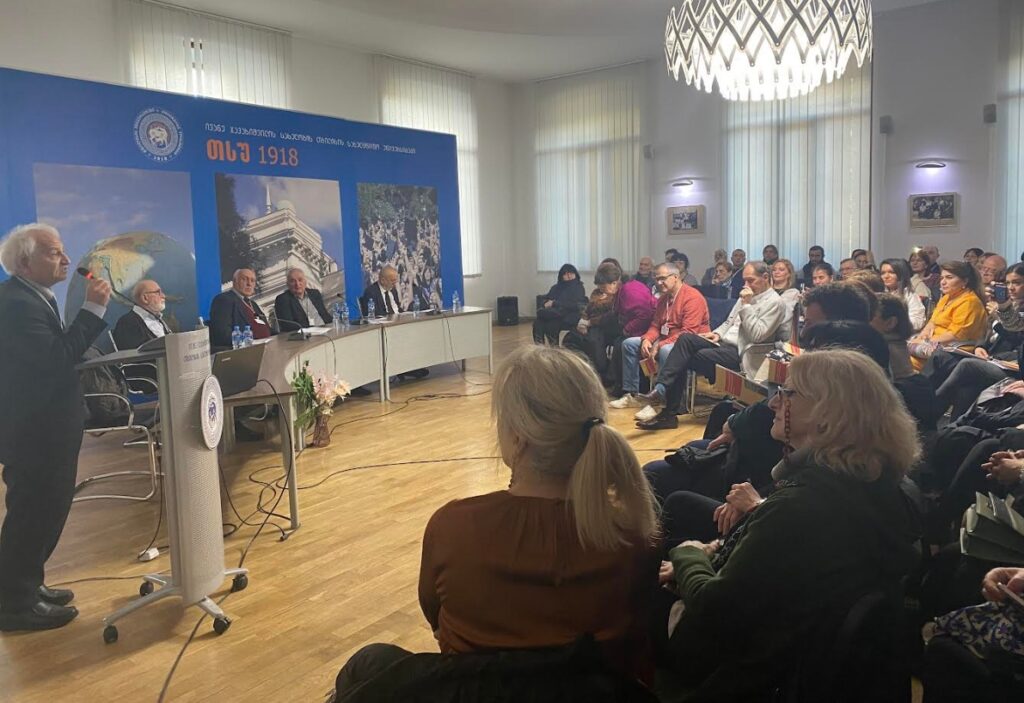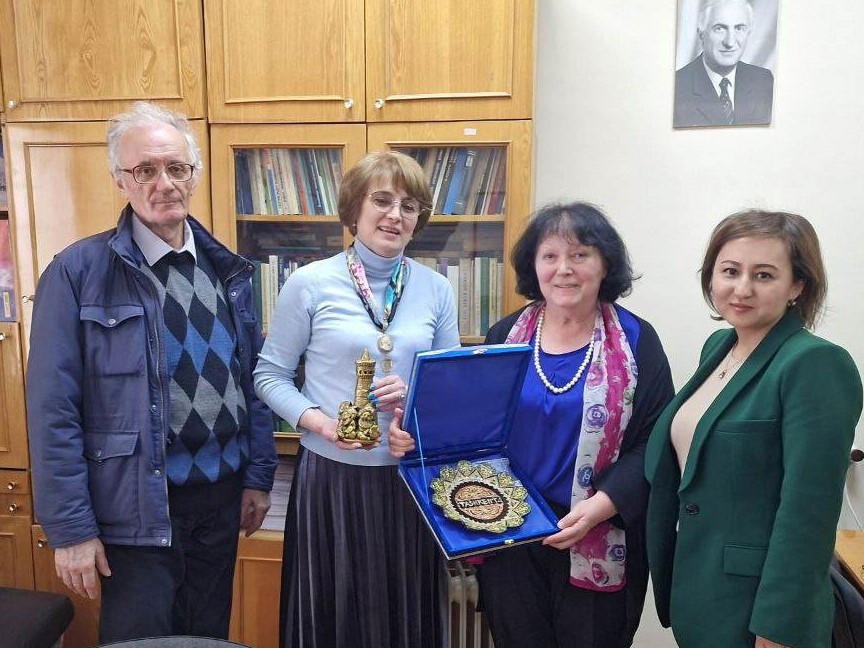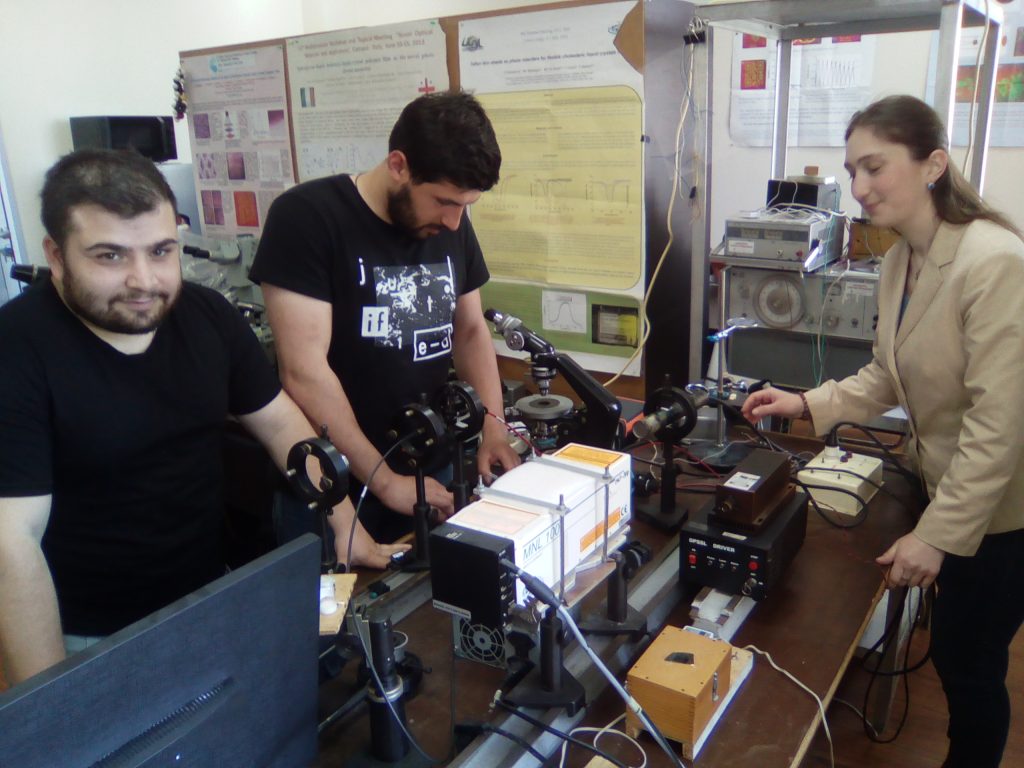On June 12, 2020, in the framework of the doctoral assistance program, a report of Giorgi Mumladze, a doctoral student in engineering physics (STU), was held at the Teaching-Research Scientific Center. The head of the thesis is the chief researcher at the STU V. Chavchanidze Institute of Cybernetics candidate of physical and mathematical sciences Nikoloz Margiani.
Stuff of the STU V. Chavchanidze Institute of Cybernetics and TSU R Agladze Institute of Inorganic Chemistry and Electrochemistry, and doctoral students – participants of the Teaching-Research Scientific Center’s program attended the seminar. The seminar was attended by employees of the STU V. Chavchanidze Institute of Cybernetics and the TSU R. Agladze Institute of Inorganic Chemistry and Electrochemistry, as well as doctoral students - participants in the program of the Teaching-Research Scientific Center.
Research theme: The influence of Boron-containing dopants on the properties of Bi-based high-temperature superconductors.
G. Mumladze presented the conclusions of the study:
1) The optimal synthesis conditions were established and the kinetics of phase formation, the superconductor parameters and the microstructure of nominally pure and doped B, B2O3, BN, Pb (BO2) 2, B4C, Sr (BO2) 2 Bi-based superconductors were studied. The methods of hand-milling and energy-efficient processing in a planetary-type mill of precursor mix material was used; saving synthesis time was achieved after doping with boron - only 60-80 hours instead of the standard hundreds of hours.
2) Using boron-containing dopants, it is possible to synthesize a much larger amount of high-tech superconducting material compared to standard technology;
3) Samples with a high content (up to 90%) of the HTSC phase were obtained by doping. The optimal concentration of dopants was determined;
4) An increase in the critical current density of 1.5-3 times is achieved by manual grinding of the precursor, and an increase of 3-4.5 times is achieved by highly efficient grinding;
5) Using SEM, TEM / STEM analysis, a correlation was determined between the surface morphology of samples of the Bi (Pb) -2223 system and the sample's conductivity, phase and elemental distribution. At the element map level, HTS, LT, and areas that are not involved in the reaction are visually recognized.
6) Using the developed technology, it is possible to produce the required amount of material with improved electro-physical parameters and phase purity in superconducting wires, tapes and devices for practical use.
The supervisor of doctoral studies Nikoloz Margiani spoke about the research process. He thanked the Center for its methodological assistance and for the acquisition of materials necessary for research.
The Director of the Teaching-Research Scientific Center summarized the results of the seminar and wished the doctoral candidate success in scientific work.





